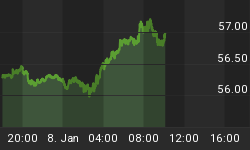Originally published August 3rd, 2011.
Resolution of the immediate debt ceiling crisis in the US came with the expected and predicted raising of the ceiling from about $14 trillion to $17 trillion, but it also came with announced plans for seemingly strident austerity measures to cut the deficit. The situation could not be more contradictory - they raise the debt ceiling to accomodate the results of their prior profligacy and then talk about reining in spending! No wonder the markets gave the whole package a massive thumbs down yesterday. It's too late, way too late, to puts the brakes on spending and any attempt to do so will result in the already fragile economy collapsing into depression. They can't have it both ways - they raise the debt ceiling so that they can continue to pay their own salaries and the miserable interest on their intrinsically worthless Treasury paper, and at the same time plan to impose more austerity on the American middle and lower classes - the result of this will be a hyperinflationary depression, as broke consumers are known to be bad for corporate profits. THIS is why the stockmarket caved in yesterday. I'll be honest - I'd figured out, as you know, that they would raise the debt ceiling, after a few weeks of showmanship, but never thought they'd be mad enough to try imposing austerity at this late stage - they should have used this medicine years ago when the patient had a chance of surviving, if they go ahead and do what they say they will it will kill the patient, the US economy, stone dead. We can, therefore, only come to one conclusion, which is that all this talk about austerity measures and cuts etc is humbug - a lot of hot air designed to make it look like they are making an earnest attempt to get a handle on the central problem of the runaway debt - and that any measures tabled to deal with it will later be rescinded or plain forgotten - they got what they really wanted which was a blank check to carry on spending with no limit.

Our chart for the US S&P500 index shows that yesterday's plunge has brought us to the cusp of a catastrophic breakdown, for if the support at the bottom of the potential Head-and-Shoulders top fails, and the heavy volume driving the decline of the past week suggests that it may, it will usher in a brutal bearmarket decline, and given the now dire fundamentals, possibly a crash. The heavily oversold MACD histogram shown at the bottom of the chart calls for a brief bounce, after which it's a case of "look out below". There is some chance that the market will recover from here, but only if it dawns on market participants in time that all the talk about cuts and fiscal prudence is bluff and bluster for the benefit of the media.
Investors should take appropriate steps to protect themselves, which may include the use of bear ETFs and/or Put options. Unlike in 2008 it is thought likely that gold and silver and some other commodities will soar, even in the event of a market meltdown, as Europe and the United States fall apart economically going forward - we could very easily see a situation where they go parabolic, and from the look of the gold chart that process may have started just yesterday.
















